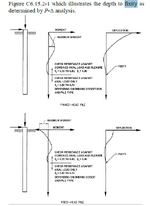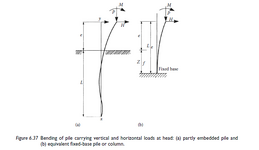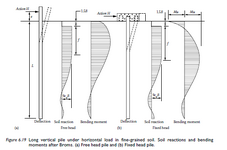For a steel driven pile, I would like to check the bending strength when subjected to lateral loads. I've seen that the pile is considered a cantilever beam and the effective length factor is taken as K=2.1 which complies with the assumption. The point of fixity is assumed to be 1 ft from ground level, and Lpile is being used to determine moments and deflections. I don't like the idea of just considering the pile to be fixed 1 ft below ground level and I was wondering if other boundary condition besides "fixed" is being used out there for steel pile capacity or if other methodology altogether is a better approach to describe the pile condition. The pile main function is to hold light weight electrical equipment.



